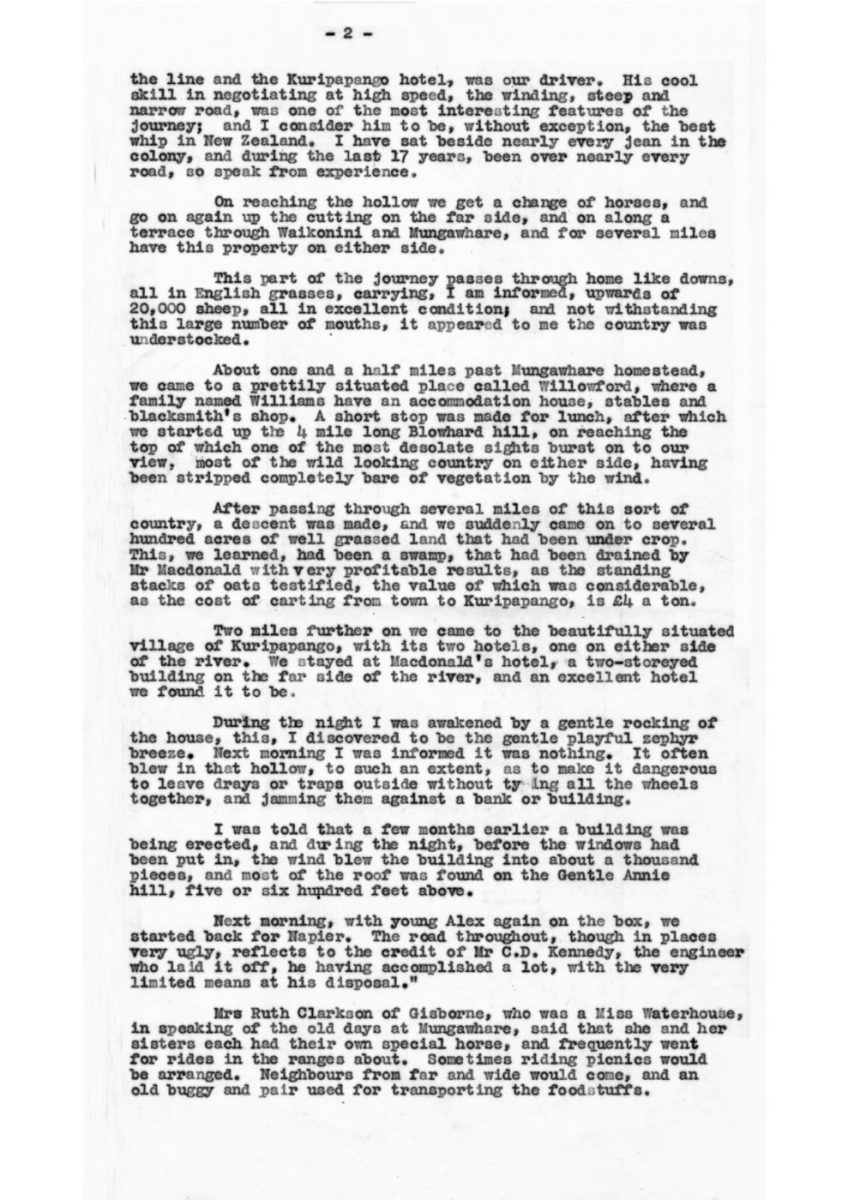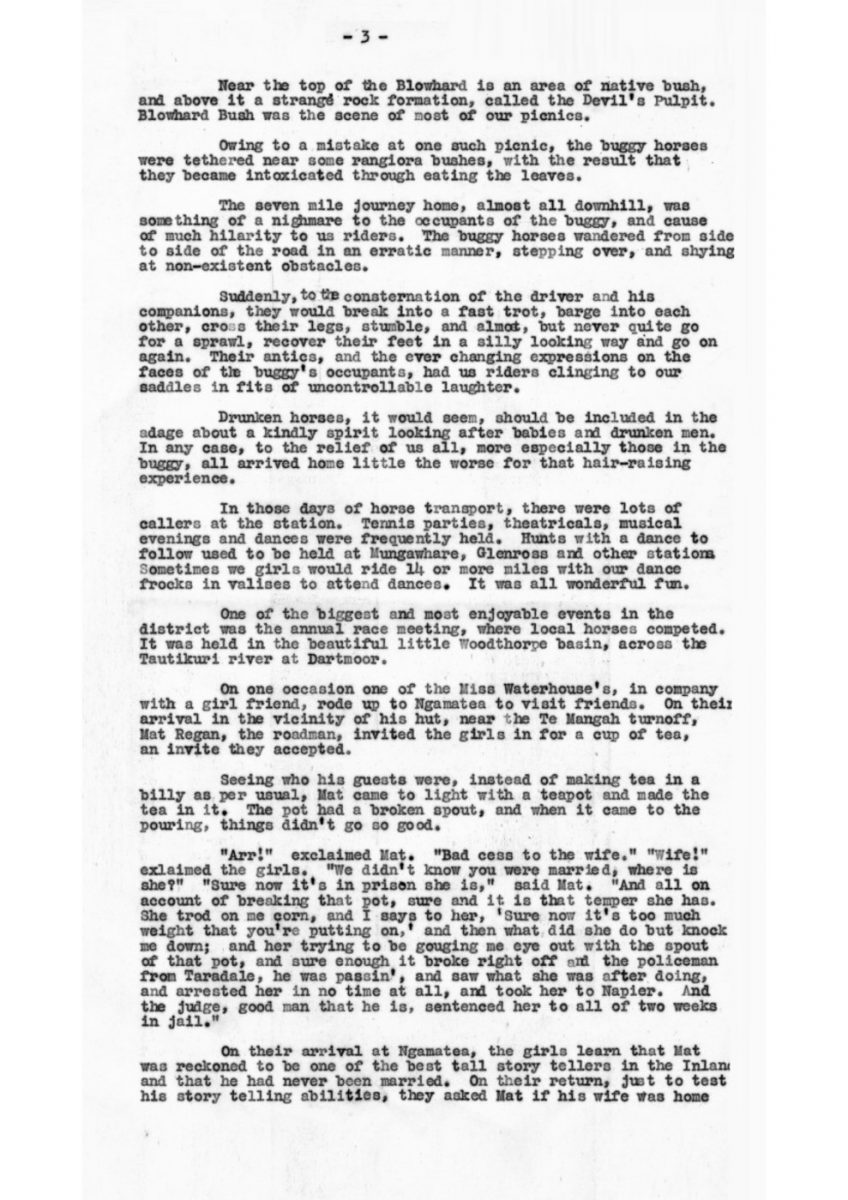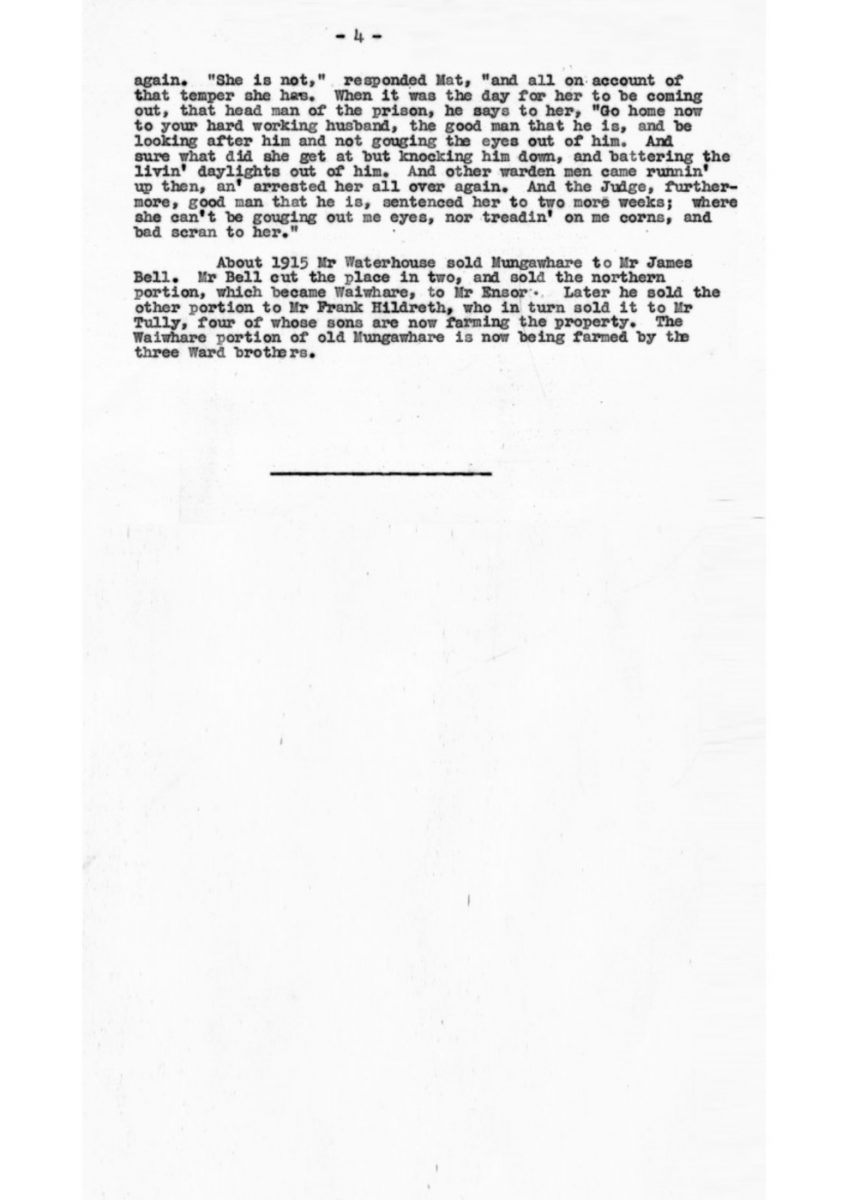– 2 –
the line and the Kuripapango hotel, was our driver. His cool skill in negotiating at high speed, the winding, steep and narrow road, was one of the most interesting features of the journey; and I consider him to be, without exception, the best whip in New Zealand. I have sat beside nearly every jean in the colony, and during the last 17 years, been over nearly every road, so speak from experience.
On reaching the hollow we get a change of horses, and go on again up the cutting on the far side, and on along a terrace through Waikonini and Mungawhare, and for several miles have this property on either side.
This part of the journey passes through home like downs, all in English grasses, carrying, I am informed, upwards of 20,000 sheep, all in excellent condition; and not withstanding this large number of mouths, it appeared to me the country was understocked.
About one and a half miles past Mungawhare homestead, we came to a prettily situated place called Willowford, where a family named Williams have an accommodation house, stables and blacksmith’s shop. A short stop was made for lunch, after which we started up the 4 mile long Blowhard hill, on reaching the top of which one of the most desolate sights burst on to our view, most of the wild looking country on either side, having been stripped completely bare of vegetation by the wind.
After passing through several miles of this sort of country, a descent was made, and we suddenly came on to several hundred acres of well grassed land that had been under crop. This, we learned, had been a swamp, that had been drained by Mr Macdonald with very profitable results, as the standing stacks of oats testified, the value of which was considerable, as the cost of carting from town to Kuripapango, is £4 a ton.
Two miles further on we came to the beautifully situated village of Kuripapango, with its two hotels, one on either side of the river. We stayed at Macdonald’s hotel, a two-storeyed building on the far side of the river, and an excellent hotel we found it to be.
During the night I was awakened by a gentle rocking of the house, this, I discovered to be the gentle playful zephyr breeze. Next morning I was informed it was nothing. It often blew in that hollow, to such an extent, as to make it dangerous to leave drays or traps outside without tying all the wheels together, and jamming them against a bank or building.
I was told that a few months earlier a building was being erected, and during the night, before the windows had been put in, the wind blew the building into about a thousand pieces, and most of the roof was found on the Gentle Annie hill, five or six hundred feet above.
Next morning, with young Alex again on the box, we started back for Napier. the road throughout, though in places very ugly, reflects to the credit of Mr C.D. Kennedy, the engineer who laid it off, he having accomplished a lot, with the very limited means at his disposal.”
Mrs Ruth Clarkson of Gisborne, who was a Miss Waterhouse, in speaking of the old days at Mungawhare, said that she and her sisters each had their own special horse, and frequently went for rides in the ranges about. Sometimes riding picnics would be arranged. Neighbours from far and wide would come, and an old buggy and pair used for transporting the foodstuffs.















Do you know something about this record?
Please note we cannot verify the accuracy of any information posted by the community.